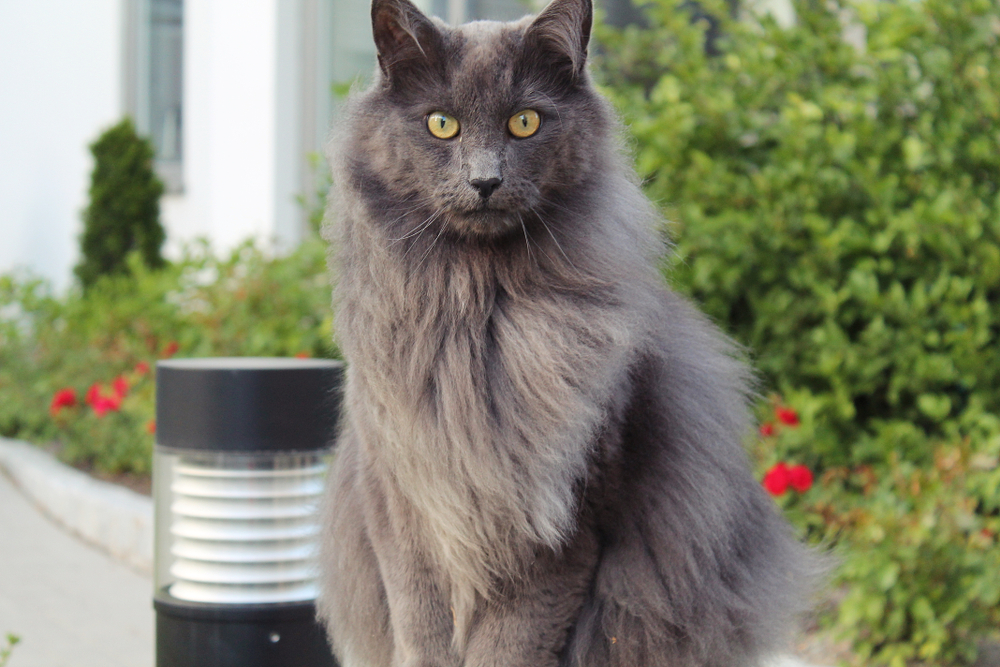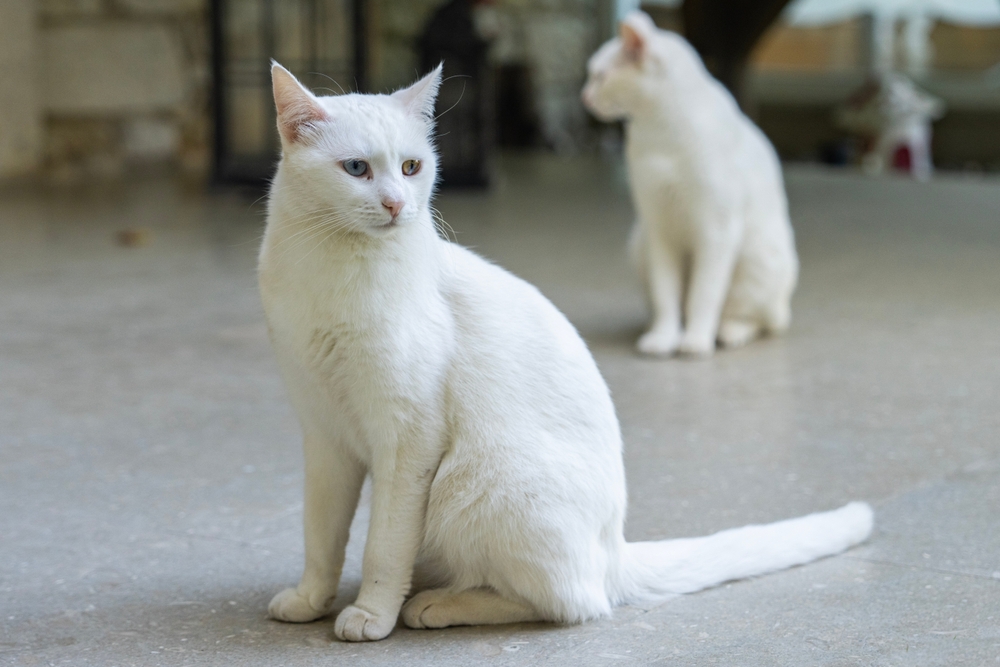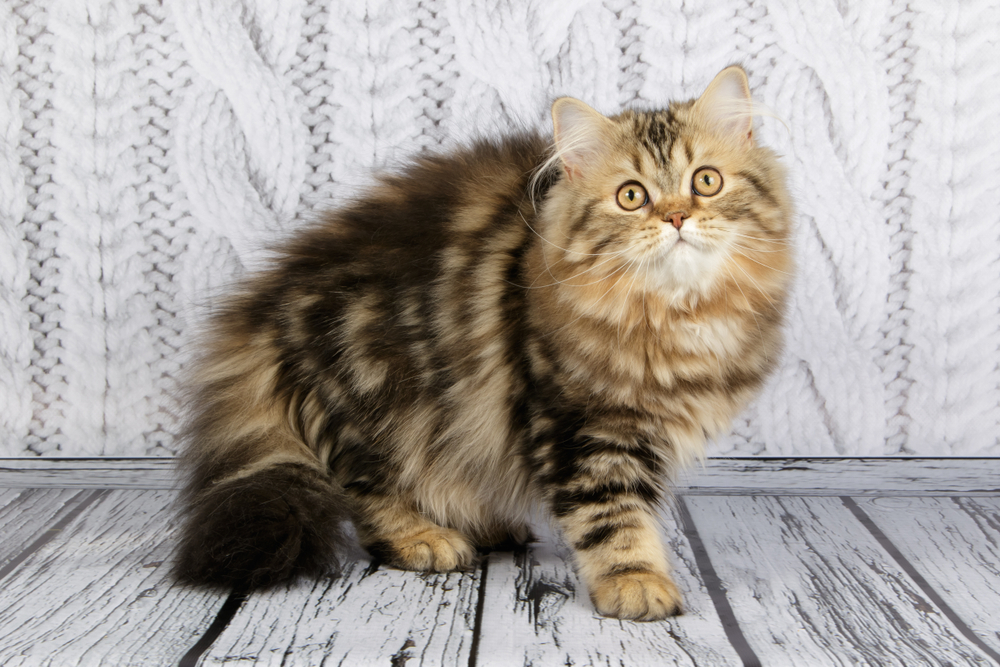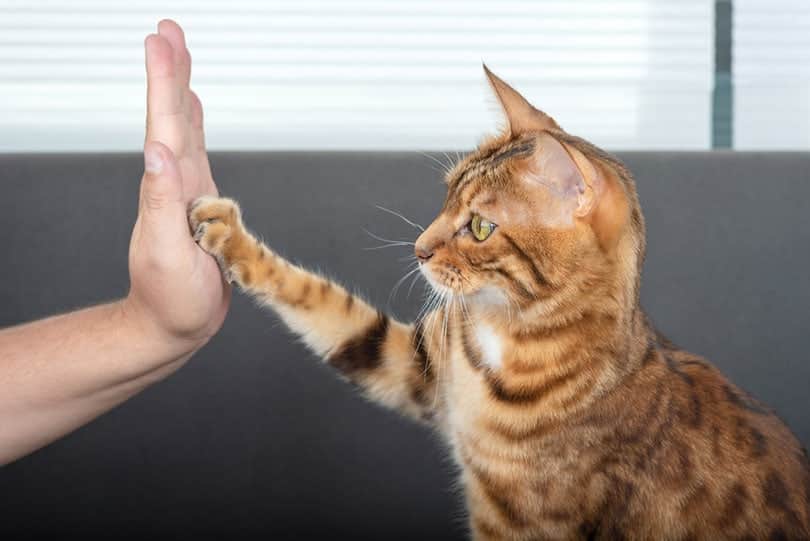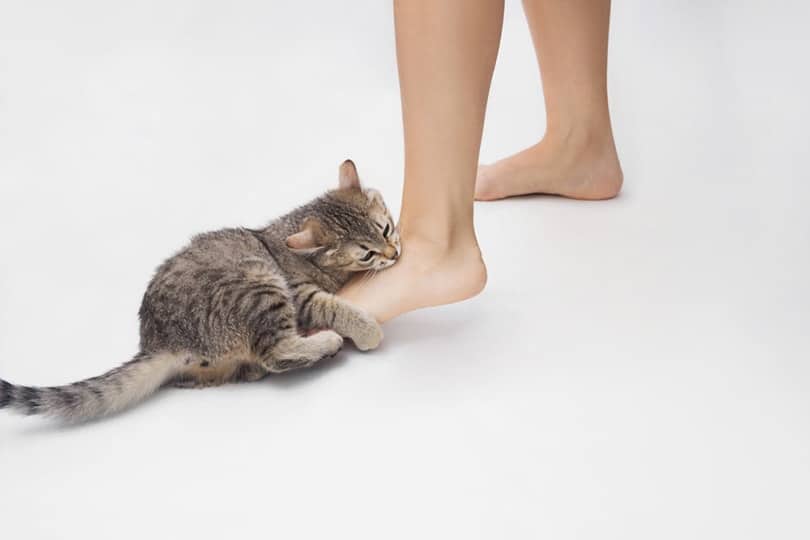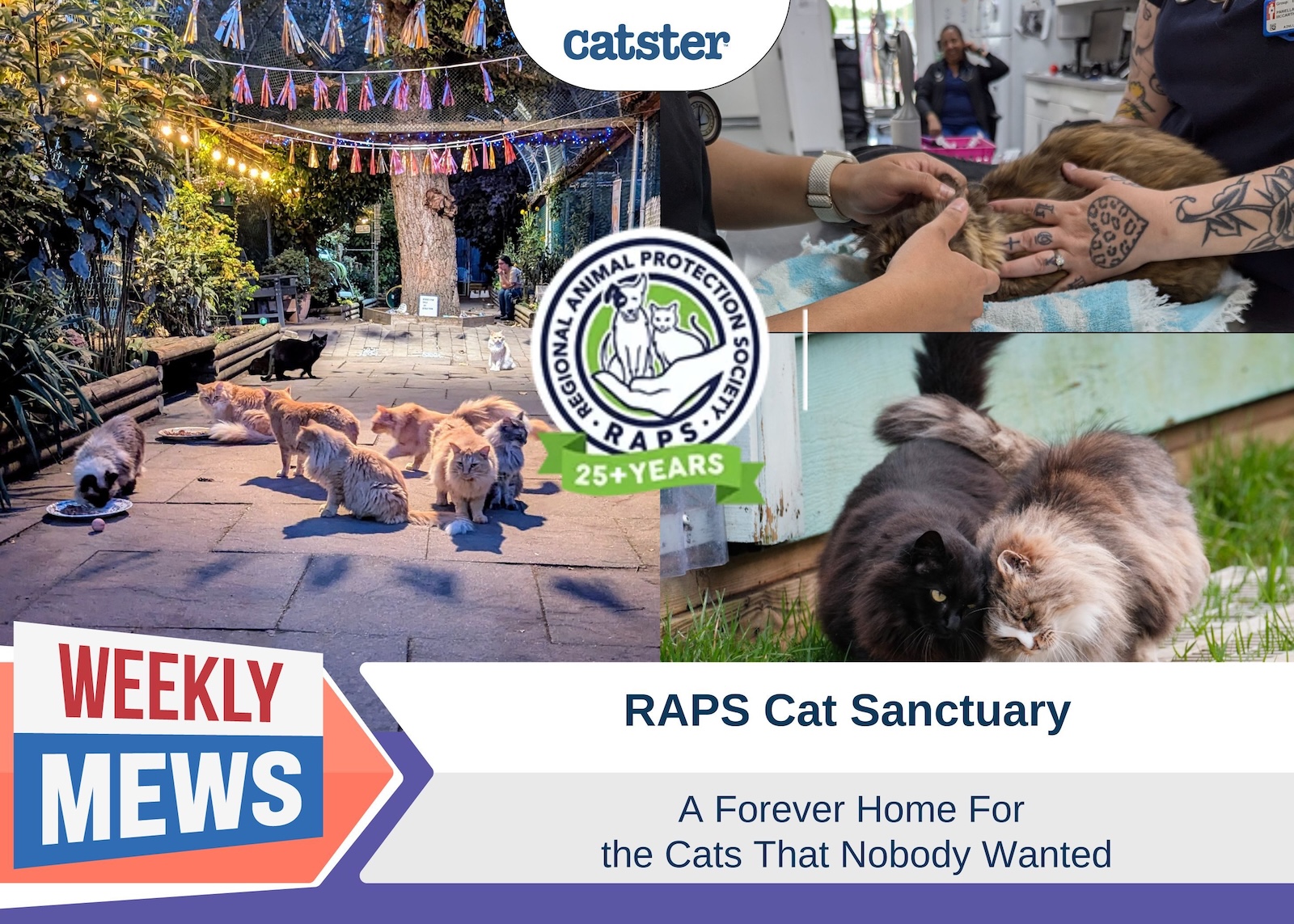Click to Skip Ahead
The Blue Lynx Ragdoll is a gorgeous version of the Ragdoll. “Blue” describes the color of the cat, which means anywhere from blueish white to platinum. “Lynx” is the pattern. The cat will have slightly darker points of color on its ears, legs, and tail. It’s a bit like a Lynx, hence the name.
Breed Overview
Height:
9 – 11 inches
Weight:
10 – 20 pounds
Lifespan:
12 – 15 years
Colors:
Varies widely
Suitable for:
Anyone who wants a cuddly cat!
Temperament:
Docile, cuddly, loyal
This coloration was likely around since the Ragdoll was created. It’s a recognized color, so breeders are likelier to produce Blue Lynx than rarer varieties. It isn’t necessarily hard to find, though looking for one particular color can sometimes be challenging.
The Blue Lynx Ragdoll shares its history and personality traits with all other Ragdolls.
Blue Lynx Ragdoll Characteristics
 The Earliest Records of the Blue Lynx Ragdoll in History
The Earliest Records of the Blue Lynx Ragdoll in History
Like many cat breeds, the Ragdoll was developed purposefully by a breeder. In this case, the breeder was Ann Baker. The breed started when a longhaired cat named Josephine had a litter of unusual kittens. Josephine had actually had many litters. However, she produced surprisingly docile, affectionate, and relaxed kittens. These kittens formed the basis of the Ragdoll breed.
The kittens varied a lot in coloration. Therefore, the Ragdoll breed has several colors and patterns today, including the blue Lynx coloration. Some of the kittens produced have Siamese-like point patterns. There are pretty good records of each kitten and the sire. Therefore, we have a good idea of which colors came from where.
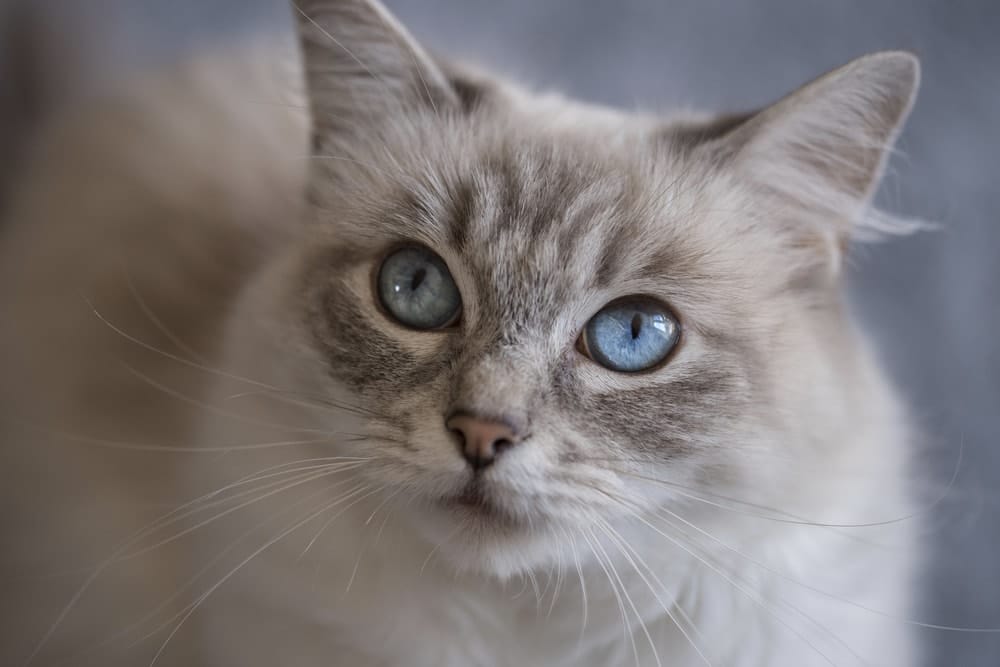
How Blue Lynx Ragdoll Gained Popularity
Ann Baker, the original breeder, disagreed with traditional cat associations and never attempted to get the breed officially recognized. Furthermore, she didn’t push the breed out to the public and remained exclusive for a long time.
Instead, she trademarked the breed’s name and set up her own registry. She created her own breeding standards and enforced them on anyone looking to sell the cat. Because she trademarked the name, breeders had to follow the breeding standards to say they were selling “Ragdolls.”
Furthermore, she prohibited the breed from being registered with other breed associations. Therefore, all breeders had to go through her organization to develop the breed.

Formal Recognition of the Blue Lynx Ragdoll
With that said, the Blue Lynx Ragdoll breed did eventually get recognized. Denny and Laura Dayton broke from Baker’s cat registry in 1975. Their goal was to gain mainstream recognition for the breed, which involved going to the traditional cat associations.
The husband-and-wife team started with a pair of cats registered with the Baker organization. However, they eventually developed the cats independently and created the official breed standard many traditional cat associations use today.
As the Ragdoll gained popularity in the US, it was also imported into the UK. Several breeding pairs were exported to the UK, where a Ragdoll cattery was started.
Today, the IRCA, Baker’s organization, still exists. However, it is very small compared to the past. Baker passed away in 1997, and the organization has dwindled since then.
Top 3 Unique Facts About the Blue Lynx Ragdoll
1. They Drop Like “Ragdolls”
This breed is recognized for its tendency to plop over when picked up. They relax like “ragdolls,” which is where they got their name from. Overall, they have a very calm and docile personality. Many claim that their temperament causes the rag dolling. However, others claim that it is a genetic mutation connected to a kitten’s response to being carried by its mother.
2. Many breeders Are Discouraging “Rag Dolling”
With that said, several breeders are now discouraging cats that ragdoll dramatically. Concerns exist that the cats’ extremely docile nature isn’t in their best interest. For example, there was a myth that the cats felt less pain due to their tendency to remain docile when harmed. Today, there are many breeders working on cats that aren’t quite as docile.
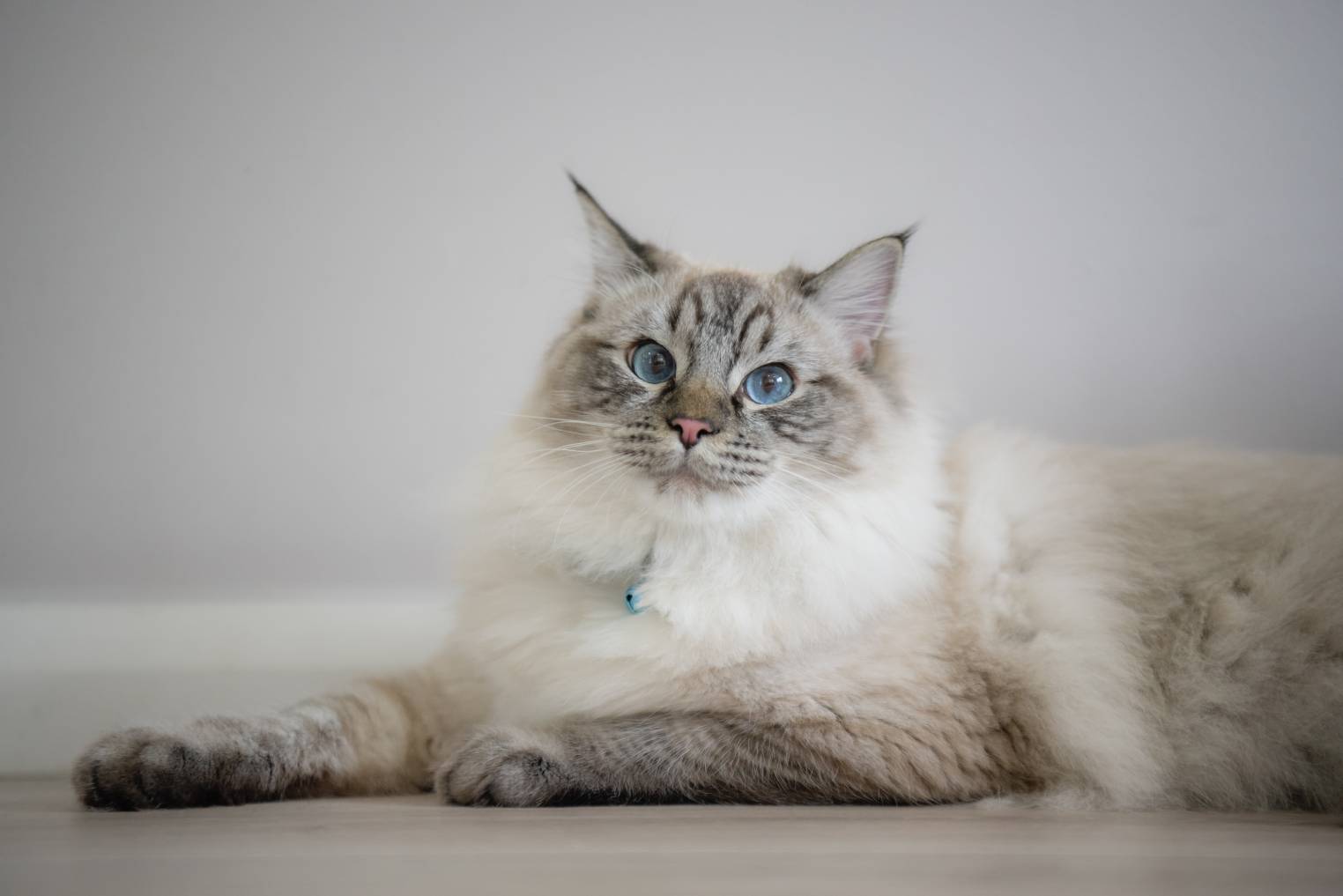
3. They Have a Low Life Expectancy
Compared to other breeds, these cats have a low life expectancy. There are many reasons for this. However, the reasons why haven’t been heavily studied. This breed is prone to a few health issues, but their docile behavior may also play a role. They may not show their pain as much as other cats, which may prevent their owners from getting them to the vet when they need it.
Hypertrophic cardiomyopathy is one of the common health conditions affecting this breed. This condition affects the heart and is entirely genetic. It can lead to sudden death in some cases. Cats with only one copy of the affected gene will get less severe versions of this disease, while cats with both can be affected as early as 6 months.
Do Blue Lynx Ragdolls Make Good Pets?
Blue Lynx Ragdolls and Ragdolls in general are known for being very gentle and affectionate. They’re great for those who want a lap cat. While they crave human attention, they aren’t as needy as other cats. Most Ragdolls don’t develop separation anxiety and don’t need attention, though they are happy to cuddle and be held. These cats are known for rag-dolling when picked up, so they’re great for cuddling.
With that said, their rag-dolling behavior can get them into trouble. They aren’t best for homes with small children or dogs. Unlike other cats, they will put up with lots of abuse—too much abuse in some cases. Some Ragdolls even plop over when grabbed by a dog instead of fighting back. Many are docile to the point that it becomes a problem.
These cats can also be expensive. You may have to pay even more if you’re looking for a specific coloration. Often, prices start at $1,000, which is far more than most cat breeds. Therefore, these cats can make great companions for the right family, but they aren’t the best cat for everyone.
Conclusion
Blue Lynx Ragdolls are a recognized coloration of the Ragdoll breed. These cats are very beautiful and share the same characteristics as other Ragdolls. They are known for being extremely docile and affectionate. However, they aren’t as needy as some other affectionate breeds. Their best-known trait is their tendency to ragdoll when picked up, hence their name.
With that said, these cats aren’t the best choice for everyone. Some are too docile, putting themselves at risk. They don’t do best in homes with dogs or small children for this reason.
See also:
- White Ragdoll Cat: Facts, History & Origin (With Pictures)
- Lilac Ragdoll Cat – Facts, Origin & History (With Pictures)
Featured Image Credit: oussama el biad, Shutterstock

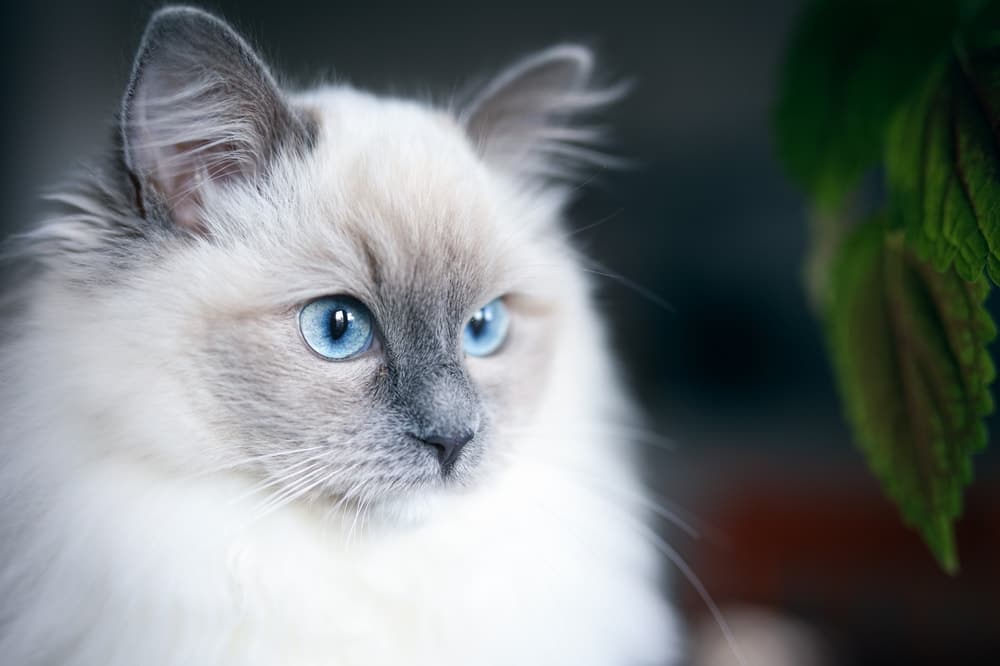
 The Earliest Records of the Blue Lynx Ragdoll in History
The Earliest Records of the Blue Lynx Ragdoll in History